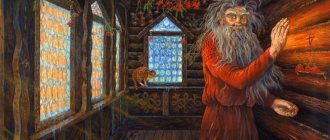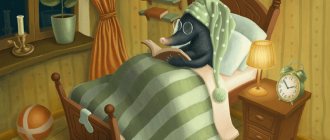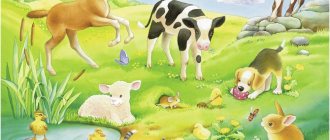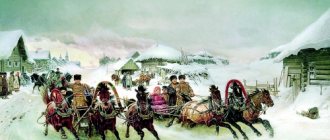Kolka the American, apparently, did not know this, and therefore walked importantly along the road with the dog. The people they met just grinned. Having caught up with the log (here we whiled away almost all the evenings), he only glanced sideways in our direction and then, seeing me (he must have recognized me), waved his hand in a friendly manner. Of course, I waved too. And the boys, who did not expect such a situation, quietly pushed me in the back to go and invite him here to the company. The American did not refuse. Dragging along the four-legged animal, which, crazy with joy, was still rushing with strength into the unknown, Kolka came up to us. I formally introduced everyone sitting in order. I'm not sure he remembered. But then, everyone already knew his name. Kolka did not sit down in the proposed place (maybe he considered the log not clean enough), but continued to stand, towering over us, like the Statue of Liberty.
Before we noticed the American, the conversation was about treasures. Our Vitalka was very interested in this topic. And even, to tell the truth, ahead of time, he shared in his mind the good that he had been chattering about endlessly. He said that the place where you can probably find valuables is not so far from our village. And if we, as a friendly crowd, go out early in the morning and each take a shovel, then we will definitely be able to find valuables in a day.
The American listened to the conversation with interest, and then asked if we had a metal detector.
- What? – Vitalka didn’t understand, and we didn’t understand either. “ Well, a metal detector ,” the American repeated, “ it’s a thing to find out the exact location of treasures.” You walk and hold it above the ground. And if there is something metallic in the depths, the device begins to beep. Our guys sighed dreamily. If there were such a device, we probably wouldn’t be sitting here now, but driving around in expensive cars. True, in Russia it’s not like in America; you can’t get a driver’s license so easily at the age of thirteen.
Then the American stunned everyone and said that they couldn’t drive there at the age of thirteen. And the device can be arranged, if necessary. Upload the program to his iPad and that’s it.
From that very second, Vitalka realized that his life had been going downhill before, but now it was starting to get better. He hugged the American like a brother and said that he needed to leave no later than tomorrow morning. To be sure, each of us had to take a shovel from home, regardless of progress. Heavy!
Russian folk tales
Russian folk children's fairy tales are very wise and convey a specific lesson to readers. The author of such tales is the Russian people. They were passed down from generation to generation by word of mouth.
There are three types: tales about animals, about magic and everyday tales.
Familiar tales drawn in the style of great artists
Have you ever seen the fairy tale about the Three Little Pigs drawn in the style of Wassily Kandinsky? Or the Ugly Duckling in the style of Vincent Van Gogh? So I don't.
Until I started studying VoiceBook publishing. They came up with the idea of releasing famous fairy tales, but presenting them in illustrations by various great artists.
Thus, at the same time, children learn the fairy tale in a new way, and many get acquainted with famous artists. This is also an incentive to find original works by masters and learn more about them.
Animal Tales
Such tales appeared many years ago. In fairy tales, animals are given human characteristics. In them, animals and birds talk to each other, make peace, swear, get offended, and so on. Here man is on the same level as animals or lower.
Modern children's stories
Short stories are one of children's favorite genres: they are easy to read and easy to follow. Arzamas has selected the best collections of stories about everything in the world: grandmothers, poor students, knights, spies, cats and hippos
By Lisa Birger
Sylvia Vanden Heide. "Fox and Bunny"
0+. Translator Irina Trofimova. "Scooter". M., 2017
Stories about the Fox and the Bunny have been published in Holland since 1998: there are more than twenty books in total, five have been translated into Russian. As befits a book from the “I Read by Myself” series, there are very simple texts with short, clear sentences, suitable for those who are just getting used to independent reading. Tae Tong Kin's illustrations are built into the stories, several of them are placed on the page, and this creates the illusion of movement. And the book talks about the most important things - love and friendship. The Fox loves the Bunny (and she is the Fox), the Owl loves the chick Pee-Peep, and no matter how difficult they all sometimes have with each other, love conquers all.
Gudrun Mebs. ““Grandma!” Frieder shouts.”
0+. Translator Vera Komarova. "Scooter". M., 2017
German Gudrun Mebs became an actress at the age of 17, traveled all over the world with her theater troupe and successfully acted in television series until she was forty, and in the 80s she began writing fairy tales and philosophical stories for children and became a popular writer. Her first book about her grandmother and Frieder was published in 1984, her fourth in 2010, and all four were illustrated by Susanna Rotraut Berner, another wonderful children's author. The main characters are five-year-old tomboy Frieder and his incredibly patient grandmother. Each story is structured the same way: Frieder starts something, and then the grandmother deals with his ideas cheerfully and wisely. He wants to learn to write - she makes him letters from dough, he wants to go on a picnic in the rain - she has a picnic at a bus stop. And this is again about love - more precisely, about the science of listening and understanding another.
Bernard Frio. "Impatient Stories"
6+. Translator Asya Petrova. "CompassGuide". M., 2013
Before becoming a writer and publisher of children's books, the Frenchman Bernard Friot worked for a long time at school and, together with his students, came up with short stories - they form the basis of five collections of “Impatient Stories”. Brief, absurdist and meaningless at first glance, these stories represent the world through the eyes of a child, when everything needs to be turned upside down, rethought, and then, perhaps, everything will become much better. Like in the story about the teacher who shouted at the children so much (“Quiet!”) that the students caught her, put her in a jar and calmly remade all their work while she, sitting in the jar, gaped in indignation. Or about the boy who cleaned his room so well that he cleaned himself too, and his mother had to throw everything back to find her son. A good reminder that the world is not always comprehended and measured by parental rules and that sometimes you can understand it only by turning it inside out.
Christine Nöstlinger. "Stories about Franz"
0+. Translator Vera Komarova. "CompassGuide". M., 2017
Franz grows from book to book: in the first collection he is six, in the final, nineteenth, he is already nine. Each story (there are usually three or four in a book, ten pages each) is some recognizable situation from a child’s life, be it waiting for gifts for Christmas or a trip to summer camp, the first meeting with injustice or a sore stomach. As always in these continuation stories, what the hero is is very important. Franz is a charming, a little unlucky, not at all ideal child who can lie and be stupid. And that is why stories about him are truly funny and instructive. Whatever Franz does, no matter what situation he finds himself in, he will have the support of a large family and loyal friends, so here we are talking not only about growing up, but also about the fact that a small child should not be alone.
Jürg Schubiger. "Where is the sea?"
6+. Translator Elena Leenson. "Scooter". M., 2013
In the funny absurdist stories of the German writer Jürg Schubiger, something strange happens or nothing happens. The pigs ask the cows how they can get to the sea. The girl got caught in the rain on a bridge in Hamburg and thought: she herself was wet, but her name remained dry. The boy put on his pants and changed his mind because he was tired. The cow is in love with sorrel. The Sun and Moon created the world so that there was somewhere to direct the rays. All these stories have one important feature in common: they invariably provoke mental effort, the need to feel someone else’s sadness or love, to take a closer look at the world around them, because in essence these are still very real philosophical parables.
Anastasia Orlova. “I love walking on clouds”
6+. "Egmont". M., 2018
The wonderful children's poetess Anastasia Orlova wrote a series of short stories - no longer than her funny children's poems. Orlova has a wonderful ability to turn any everyday thing into a big event. Mom puts on makeup - an event, clouds reflected in a puddle - an event, went for a walk with mom by the hand, tripped and fell on the street - also a whole thing. I drank orange juice - there was a swamp in my stomach, there was a noise in my ears - there was a janitor sweeping up the leaves with a broom. Everything around the child turns out to be alive and important, even his socks.
Socks
I'm sitting in the morning, getting dressed. I take yesterday’s socks, but they are dirty. And they smell somehow impolite - like yesterday’s puddle. And I quickly went to wash my socks with strawberry soap.
Marie-Aude Murail. "Dutch no problem"
6+. Translator Marina Kadetova. "Scooter". M., 2014
Frenchwoman Marie-Aude Murail wrote her first stories for children at the turn of the 1990s, and today in France she is already known as the author of several dozen books. Her teenage stories “Umnik”, “Oh, boy!” were published in Russian. and "Miss Charity". Dutch No Problem is a collection of three of her early stories. Short, but very inspiring. In one, a boy who is sent to learn German for the summer comes up with his own language and speaks it well, in the second, two girls compare New Year's gifts, in the third, a father stays with his four sons for the weekend and doesn't cope well with them. Everything seems simple, but each situation contributes to the writer’s favorite theme: all of us - both adults and children - need to learn to talk to each other, again and again to come up with a “Dutch” language that will help overcome misunderstandings.
Ksenia Dragunskaya. "Angels and Pioneers"
12+. "Time". M., 2018
The new book by Ksenia Dragunskaya very well conveys the confusion of Orthodoxy, patriotism and fear of the Unified State Exam into which the modern school has turned. But the main thing is not how funny, with her signature absurdist humor, Dragunskaya plays out all this modern children's life, but her willingness to offer an alternative - a family where they are not scolded for grades, robot schoolchildren who are ready to stand up for their classmates, a grandfather who turns into a watchdog to keep evil teachers out of the door, a school where literature is taught by a writer, and geography by a sea captain.
Maria Bershadskaya. "Big Little Girl"
0+. "CompassGuide". M., 2018
A happy example of a domestic book series for children is 12 stories (for each story there is a separate lavishly illustrated book) about a girl, Zhenya, a very ordinary girl, but so tall that her mother has to stand on a stool to braid her hair. The metaphor here is clear: Zhenya may look very big, but inside she is still growing, and Bershadskaya’s stories are dedicated precisely to this internal growth. 12 books are a year in Zhenya’s life. She bakes a cake for dad's birthday, walks the dog, goes to the village, waits for the New Year: the simplest things always turn into funny adventures. Or thoughts, including about very difficult things: is it possible to think about a holiday when grandfather is sick? Which direction should you go if you are completely lost in the forest? And what to do if someone abandoned a dog on the street?
Stanislav Vostokov. “Do not feed or tease!”
6+. "Egmont". M., 2017
Stanislav Vostokov is a very talented writer and a true animal lover. He worked at the Moscow and Tashkent zoos, as well as at the Durrell Center for Nature Conservation on the island of Jersey, and participated in the construction of a rehabilitation center for gibbons in Cambodia... But the point is not in a romantic biography, but in that special ironic-loving intonation with which he writes his stories about animals and people. “Do not feed or tease!” - his most famous book, stories of a Moscow Zoo attendant: short portraits and sketches of monkeys and capybaras, as well as hippopotamuses, which are not there.
Where's the hippopotamus?
Visitors often ask: “Where is your hippopotamus?” Why is there no hippopotamus? But there is no hippopotamus. And you begin to feel very uncomfortable about such an omission, as if you didn’t bring the hippopotamus from Africa. Visitors shake their heads reproachfully: “What do you have to look at here if there is no hippopotamus?” Not for monkeys. - Why not monkeys? - you answer. - Just like monkeys. After all, some of them are also from Africa. And they probably saw a hippopotamus there!
Bart Muyart. "Brothers"
12+. Translator Irina Mikhailova. "Scooter". M., 2017
In Belgium, Bart Muyart is one of the most famous writers, the author of more than forty books, winner of numerous awards. And so far only his “Brothers,” a collection of stories about his childhood in Bruges in the late 1960s, have been translated into Russian. There are seven brothers, and they are tirelessly interested in everything. Is it true that the whistle in your ear is the echo of dancing on your future grave? How does a pipe help dad think? Can you get sick if you put an onion in your armpit? And did the king himself really drive in the royal car to give the youngest of the brothers silver spoons? Time in these stories flows slowly - so that both the characters and the reader can look at the world around them and discover that everything in it is worth a separate story and is full of meaning.
Victor Lunin. "My beast"
12+. "Beringa". M., 2015
Victor Lunin is a poet, translator and writer, holder of an Andersen diploma for translations of children's poetry, author of the story “The Adventures of Butter Liza.” “My Beast” are stories about animals that the author encountered at different points in his life: a moose in the forest, a cat in the kitchen, a nightingale in the country - simple, like table stories or family anecdotes. A simple, but surprisingly pleasant book in its unpretentiousness.
Asya Petrova. "Wolves on Parachutes"
12+. "Black River". SPb., 2017
Writing for teenagers is much more difficult than writing for the middle schoolers to whom most modern children's stories are aimed. Partly because teenagers instantly and acutely sense falsehood. In this collection by Asya Petrova, the honesty is almost stunning. The experiences of the growing hero are conveyed extremely accurately: these are stories about how you are afraid of death, how fantasies become larger than life, how difficult it is to trust another, how joy is inseparable from suffering, and how it is always easier to believe in tragedy than in happiness. And in each story there is not a bland moral, but a life lesson, something that makes it possible to move on.
Arthur Givargizov. “Control dictation and ancient Greek tragedy”
6+. "Melik-Pashayev". M., 2017
In fact, it is completely impossible to choose the best one from Givargizov’s books, because they are all a cure for boredom and sadness. And the point is not only that they are easy to read and very funny (you start laughing from the very first pages). For the reader, tormented by school, work, parents and other toe-to-toe behavior, a real festival of disobedience is organized here. This is a liberating laughter that knows no hierarchies, does not strive for education and some kind of “pedagogy”, which is already abundant everywhere. It is not surprising that Givargizov is especially good at books about school: “Notes of an Outstanding Loser,” “Test Dictation and Ancient Greek Tragedy,” “Flight of an Airplane by Music,” “How the School Principal Disappeared.” But he also makes kings and generals, pirates, and pensioners very charming, not without weaknesses and passions.
Irina Zartaiskaya. "The best age"
6+. "Egmont". M., 2018
Irina Zartayskaya’s stories are ideal for parents who are worried about the pedagogical safety of children’s reading: no hooligans are welcome here, and the poor students are somehow unconvincing and too cute. In fact, the author is not that interested in school life; in her stories, the main thing is family. The most traditional: mom is always in the kitchen, and dad is at work. And in this immutability of all positions one can see the guarantee of the permanence of the world. Now you can play linguistic games in it (what if instead of breakfast there is today’s or yesterday’s?), argue with puddles and go to school in tights and T-shirts, because content is more important than form.
Mikhail Esenovsky. "The Ultimate Spy Question"
0+. "Egmont". M., 2017
Writer and poet Mikhail Yesenovsky continued the absurdist tradition of Russian literature, using it for almost therapeutic purposes. In “The Main Spy Question,” a very brave boy Yura enters into wonderfully funny dialogues with things that he is afraid of: a crocodile under the bed, a skeleton behind the curtain, a grandfather’s portrait on the wall. And, of course, with the spy torturing Yura with the main spy question: “Who do you love more - mom or dad?” Of course, laughter overcomes fear - as in the sequel “Delicious Yura”, where the hero conducts his absurdist conversations with a fox and a jerboa who are about to eat him. And in “Anginina Marina” Yura always gets sick with something, and even in rhyme:
“The sick Yura is not in good health: he doesn’t walk during the day, and doesn’t sleep at night, and doesn’t hear through his nose, and doesn’t breathe through his ears, and his heel shoots, and his neck creaks.”
Nikolai Nazarkin. “Emerald fish. Mandarin Islands"
6+. "Egmont". M., 2018
The subtitle of the book is “Ward Stories”: these are stories about children for whom the hospital has become an everyday occurrence. The book is partly autobiographical: Nazarkin grew up diagnosed with hemophilia and was in the hospital much more often than at school. The residents of the wards dream of fishing, beg each other for sausages, exchange toys, weave fish from drip filters, and the real trouble here is when the brilliant green has disappeared from the ward and the fish from the filters cannot be painted emerald. Nazarkin does not embellish hospital life, namely that he does not see a tragedy in it. More precisely, it’s not the tragedy that interests him: everyday drips, ECGs, doctor’s rounds and waiting for packages from home become only the background for a strong boyish friendship. It’s just that these boys are real knights, and “a knight must face his fate.”
Sergey Georgiev. "Tamer of Lilac Hippos"
0+. "Egmont". M., 2017
Over many happy years in children's literature, the writer Sergei Georgiev has polished his stories to absolute brevity. Some literally consist of one line: “Remember: a horse in apples is not a culinary recipe.” And it is not only linguistic virtuosity that is impressive, but the ability to create a three-dimensional picture with one movement. A few phrases - and you see a fifth-grader meowing in music class, or a third-grader examining a chocolate candy under a magnifying glass to make it bigger. These stories can be retold as anecdotes, but their main purpose is to make the gears of even the laziest fantasy turn rapidly.
Oleg Kurguzov. “Our cat is an alien”
0+. "Egmont". M., 2017
For his first book of short stories, “The Sun on the Ceiling. Stories of a Little Boy,” published in 1997, Oleg Kurguzov received the Janusz Korczak International Prize. Since the late 1980s, he has been the editor of children's publications: from the magazine “Tram” to the newspaper “Little Cart”, which he himself invented. In 2003, his last book, “Our Cat is an Alien,” was published, and in 2004 Kurguzov passed away. And what a pity that he did not live to see the current heyday of children's literature! “Our Cat is an Alien” is a book about a family in which everything is extraordinary: dad flies and crawls with his son, the goat turns into a dog, and the horse comes to visit for cleaning. And also - a book about love, because this strange family with a cat is an example of complete harmony.
Sergey Makhotin. "The Grunt Virus"
6+. "Detgiz". M., 2014
Sergei Makhotin, the author of novels, poems, short stories, and historical stories, won the Korney Chukovsky Prize “for outstanding creative achievements in Russian children’s literature” in 2011. The Grumble Virus itself received the Scarlet Sails Award and the Andersen International Diploma, and yet, finding this book is not at all easy - but it’s definitely worth it. “The Grumbling Virus” is the story of the inhabitants of one house, inspired, according to the author, by his childhood in St. Petersburg. The stories in the collection are both fabulous - for example, about a hairdresser who bewitched a girl's braids so that whoever pulls them immediately becomes smaller - and piercingly realistic. For example, about two classmates who were sent to visit a third, but it turned out that he was not sick, but went to Boston, and what was left was a grandmother, a skinny cat on a branch outside the window, and a melancholy feeling of broken conversations. Makhotin knows better than many others how to show that life can be both surprisingly easy and strangely sad.
Alexander Blinov. "The House That Went"
12+. "Scooter". M., 2018
Alexander Blinov is a graphic artist, architect and aircraft designer who just a few years ago began writing stories for children. Blinov already has six wonderful books, and in all of them - be they fairy tales, as in “The Moon Who Loved Eclairs”, or autobiographical stories, as in “Pure Lies” - you feel some kind of incredible freedom. No boundaries, no constriction or wear and tear, a full tramcar, inside of which a seven-story building could fit, suddenly planning to go on a journey on foot. Paris - Berlin - Vienna - Rome and beyond everywhere. But in the end, the house still returns, having fled from Hollywood to the Novoe Khodilovo microdistrict. In these stories, Blinov perfectly managed to convey the feeling of a man of the world, equally at home in Italy and Israel and, to the same extent, frivolously alien.
Children's room
Special project
Children's room Arzamas
Tales of magic
Such tales are based on a miracle. Everything here is fantastic and unreal. A person talks to fantastic characters who do not exist in everyday life. Among the fantastic characters, the following stand out:
- Baba Yaga
- Dragon
- Koschei the Deathless
- Giants and so on.
In a fairy tale, a person deals with unusual things:
- Self-assembled tablecloth.
- Glomerulus
- Needle.
These objects with magical properties do not exist in real life.
Tales about everyday life
These tales illustrate everyday life. They contain both truth and fiction. These tales contrast opposites: rich and poor, young and old, good and evil, weak and strong.
Foreign children's fairy tales
The best fairy tales for children are written by foreign writers. The most popular are the fairy tales of the Brothers Grimm, G. Andersen, O. Wilde, C. Perrault, D. Rodari, V. Hauff. In foreign fairy tales, good always triumphs over evil.
You can listen to such tales online or read them. Children really like to read foreign writers.
The most popular foreign fairy tales:
- Winnie the Pooh. This story was written by Alan Milne. Popular all over the world. This fairy tale teaches you to be brave, kind, friendly, and optimistic.
- The Adventures of Carlson. The story was written by Astrid Lindgren. Here, a little boy befriends an unusual creature with a propeller on its back. A fairy tale teaches that one must always believe in a miracle. Reading this fairy tale, the child understands that in life it is better to approach everything with humor.
- Alice in Wonderland. This piece was written by Lewis Carroll. For a long time it has been in first place in popularity among children all over the world. There is no person who does not love and does not read this fairy tale. Alice travels to amazing places, talks with magical animals. In the process of reading a fairy tale, a child finds himself in a magical world full of mysteries.
Top 10 fairy tales for children 8-12 years old
- Magic tales of Japan. Strawberries under the snow
- Khodza, Zhukrovsky. "Gullible tiger. Burmese, Indonesian, Vietnamese fairy tales"
- Magical tales of Sweden
- Jansson T. “All about the Moomins”
- Kipling R.D. "Mowgli"
- Schmidt A. “Murli”
- Antoine de Saint-Exupery "The Little Prince"
- Jones D.W. "Walking castle"
- Maar P. “Seven Saturdays in a week”
- Jaster N. “Cute and the Magic Booth”
- Ende M. “The Neverending Story”
Small children's tales
Short fairy tales for children are very popular among kids. The child becomes familiar with them from infancy. After all, small children cannot keep their attention on one thing. Long fairy tales are not yet interesting for them.
For kids, it is important that a book with fairy tales has pictures in a hard cover. Such fairy tales can be read to children on the road. Fairy tales teach us to distinguish good from evil, make fun of bad people, teach friendship, and so on.
The most famous short tales are:
- The Tale of the Chicken Ryaba. This fairy tale can be told to children from an early age. It's about how my grandparents couldn't break an egg for days, but the mouse did it with the help of its tail.
- Masha and the three bears. This tale is about a little girl who went into the forest with her friends and got lost. I saw a house in the forest and went there. There she ate porridge and went to bed. And the bears came home and saw that the chair of the smallest bear was broken, the porridge had been eaten. Then he saw Masha sleeping in his bed and screamed. Masha woke up and ran out the window. This fairy tale teaches children not to go into the forest without permission. He says that you can get lost there and get into unpleasant situations.
- Turnip. This fairy tale is about how grandfather planted a turnip. Then she grew and he began to pull her out. His grandmother, granddaughter, cat, and dog helped him drag it. But only with the help of the mouse was he able to pull it out. This fairy tale shows children that they can cope with problems together rather than alone. After all, it is unknown whether he would have been able to pull out the turnip if they had not come to his aid.
III. Halt
After about two hours the air finally and irrevocably warmed up, as is usually the case in our latitudes. It became more difficult to walk. So we started looking for a place to stop. About a hundred and fifty meters from the route, on a balding hill, there were several frail trees. Vitalka commanded, and we walked together into the long-awaited shadow.
Having placed our belongings on the grass, we plopped down next to them and began to extract the saving moisture from our backpacks. Having carefully examined the grass, Kolka took out a mat from his backpack, the kind that is usually placed on top of stools (probably women's utensils) and sat down on it cross-legged. He looked at us with interest. Still would! I would probably, if I were there with them, also look wide-eyed. No one knew what was going on in his head at that moment. Our boys pulled out a cigarette from somewhere (one for everyone) and, clumsily smoking, began passing it from hand to hand. They probably thought they were very cool. When the tobacco package reached Kolka, he politely refused. Vitalka and the other guys didn’t understand: “ What do you mean? Why do they not smoke in your America? We heard something stronger there too . “ Yes, ” the American nodded in agreement. – Some types of soft drugs can be easily bought in a store. - Nice! – our people hummed in unison. – This is a land of opportunity! “ But... ” Kolka hesitated. - But what? — the boys asked excitedly. “ But it’s mostly those who are poorer who smoke.” Well, cigarettes, how can I put it, slow down brain activity. That is, those who want to go to a good college and have achievements in school will never do this. Well, then, cancer... - What? – I asked again. — Honestly, I don’t know this word in Russian. The disease is so terrible. - Like, lung cancer, or what? – Vitalka inserted with a grin. - Yes, something with the lungs. Or with a throat. Or something else. Well, a very unpleasant treatment. And the mortality rate is high. The boys suddenly became quiet. It’s not that our ears at school weren’t already buzzing about such harmful things. It was just somehow strange to hear something like this from the lips of someone his own age. And even on such a sunny day. After sitting a little longer, we took our backpacks and headed further along the route. A half-smoked cigarette remained on the grass...
Bedtime Stories
A bedtime story for children is read by parents before bed. It helps the child calm down. Such tales are very kind and instructive. There is no cruelty in them.
Fairy tales teach us to distinguish good from evil, show what is good and bad.
The most popular bedtime stories for babies over one year of age are:
- Swan geese
- Teremok
- Masha and the Bear
- turnip
- The Tale of the Fisherman and the Fish
- Ryaba hen
- The wolf and the seven Young goats
- sleeping Beauty
- Puss in Boots
- Zayushkina's hut.
Fairy tales for “adult” children
The most difficult age for choosing a book is coming, since it is now that the child turns into a teenager. "Carlson" and "Pinocchio" are left behind, it's time to offer "Gulliver's Travels" or "The Jungle Book", where exciting adventures will coexist with the opportunity to absorb a huge amount of new information.
10-12 years old is the best time to read “The Moomins” and get inspired by Krapivin’s “Flying Fairy Tales”. “The Night Before Christmas” by Gogol, “Little Tsakhes” by Hoffmann - this is both interesting for a child and quite serious, adult reading. This does not mean at all that the young reader “grew up” from the folk tale. It’s just that now this is a completely different reading, which not only teaches us to distinguish between good and evil, but also introduces us to the culture and traditions of the peoples of the world.
Fairy tales that have developed in China, Japan, and India attract with their unusual flavor, but perhaps the child will also notice something in common between the stories he knows from Russian fairy tales and oriental “exoticism.” For example, the motif of magical power possessed by the simplest-looking objects. Running boots, an invisible hat - something similar is in the Japanese fairy tale “What the Birds Told.” An old man finds a cap in the forest, and when he puts it on, he begins to understand the voices of birds. They tell him about a variety of human misfortunes, and, traveling from village to village, the old man saves peasants from troubles and misfortunes. Fate rewards the old man for his responsiveness and love for his neighbor. The villagers surround him with universal respect - and what could be more valuable than respect for old age and wisdom in Eastern culture?
Interesting children's audio tales
Online fairy tales for children have become popular lately. On the Internet you can listen to various fairy tales online.
It is not necessary to buy collections of fairy tales, because interesting children's fairy tales can be found for free on the Internet.
The most popular children's audio fairy tales:
- Mermaid
- Cars
- The Snow Queen
- Snow White and the Seven Dwarfs
- Three from Prostokvashino
- Little Red Riding Hood
- Aladdin
- Cinderella
- History of toys
- Winnie the Pooh.
You can listen to these tales at any time. Some fairy tales can be included for children at night. Such tales are voiced by announcers, famous actors and singers. Fairy tales have interesting and captivating music. Children love such fairy tales. In them, the heroes of fairy tales come to life, and kids find themselves in a world of magic.
Types of online fairy tales
- Russian folk tales.
- Foreign fairy tales.
- For children under three years old.
- Audio fairy tales from four to five years old.
- Long and short online fairy tales.
Fairy tales teach children that good always triumphs over evil. Fairy tales teach that you should never give up. You need to persistently pursue your goal. They help develop creativity.
With their help, the child learns to fantasize, think, and analyze. A fairy tale helps a child find answers to questions of interest.
You don't have to buy fairy tales. You can read and listen to fairy tales online. Younger children love short stories. And children from three to four years old prefer long fairy tales.








